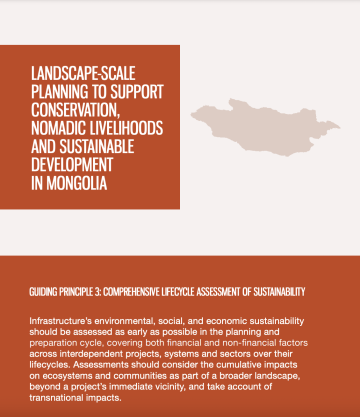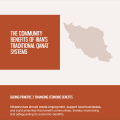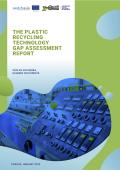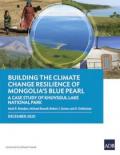
Located between China and Russia in northern Asia, Mongolia is a leading producer of commodities such as coal and copper. Over 70 per cent of Mongolia’s rangelands are degraded to some extent, and over 75 per cent of the country’s pasturelands suffer from degradation. In response, the Government of Mongolia, with the assistance of TNC, has developed landscape-scale plans for the country that take into account biological resources, ecosystem services, climate change considerations and projected development.
This case study illustrates Guiding Principle 3: Comprehensive Lifecycle Assessment Of Sustainability and is part of a series of ten case studies which aim to inform the forthcoming wave of global infrastructure investment. Collectively, they specify and demonstrate how environmental, social and economic sustainability must be integrated right across infrastructure policymaking at the systems-level. The individual principles and case studies were developed via ongoing global consultation and inputs from experts and UN Member States, as part of implementation of the UN Environment Assembly (UNEA) Resolution 4/5 on Sustainable Infrastructure.
These publications have been made possible by the financial support of the Global Environment Facility, the Swiss Federal Office for the Environment, and the Partnership for Action on Green Economy.




